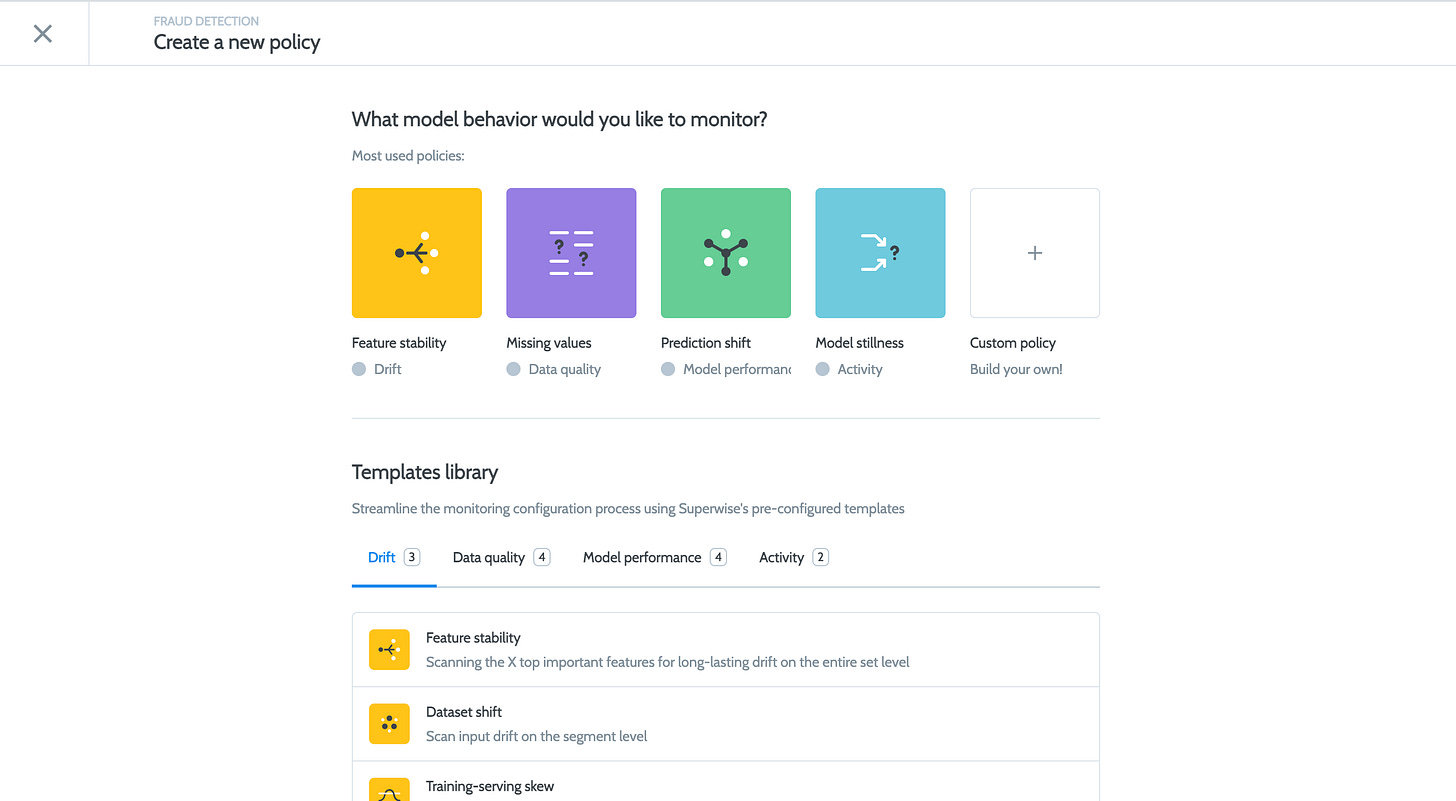🔬 Edge#190: Continuous Model Observability With Superwise
On Thursdays, we do deep dives into one of the freshest research papers or technology frameworks that is worth your attention. Our goal is to keep you up to date with new developments in AI and introduce to you the platforms that deal with the ML challenges.
💥 Deep Dive: Continuous Model Observability With Superwise
The MLOps lifecycle is often fraught with information overload, which can lead to sub-optimal decision making. The scale and complexity of modern machine learning projects can easily overwhelm even the most experienced data scientists and engineers. This complexity results in a situation where it is difficult to see what is wrong, why, and how to solve it – without having to wade through mountains of data and dashboards.
This is where continuous model observability comes in. By definition, continuous model observability is the process of monitoring and understanding machine learning models throughout their lifecycle, from research to production and back again. This helps to ensure that models are performing as expected and that any issues can be quickly identified and remedied in an automatic fashion. Let’s dive into the Superwise platform and see Continuous Model Observability, in action.
Benefits of Continous Model Observability
Improved model performance: By monitoring models throughout their lifecycle, it is possible to identify and remediate issues before they cause problems in production. This helps to ensure that models are always performing at their best.
Reduced downtime: By quickly identifying and fixing problems, continuous model observability can help to reduce downtime and keep systems running smoothly.
Increased transparency: Continuous model observability provides increased transparency into the workings of machine learning models. This can be beneficial for both data scientists and business stakeholders.
Greater collaboration: Continuous model observability can help to foster greater collaboration between data science and engineering teams. By understanding how models are performing, engineers can provide feedback that can help to improve the model.
Better decision making: Continuous model observability can help to improve decision-making by providing insights into how models are performing. This can help organizations to make better decisions about which models to deploy, when to deploy them, and how to fine-tune them.
Introducing Superwise
The Superwise platform (you can start with their generous community edition) provides a complete suite of capabilities to monitor ML behavior, troubleshoot issues, and continuously optimize model performance. It aims to give ML practitioners fully automated, enterprise-grade model observability capabilities that take years to develop in-house, wrapped in a self-service platform deployed on the cloud of their choice.
Important Components of Continuous Model Observability
1. Build policies, not dashboards: The first step is to express the business problem that you want to monitor. A platform is needed that will automatically populate metrics, features, and thresholds for you. This kind of tedious work is error-prone and time-consuming, so it is best left to a platform that can do it automatically and then allow you to customize and add domain expertise on top of it.
2. Incidents not alerts: In a state of continuous alert fatigue, scientists and machine learning engineers can’t afford to analyze every issue and uncovering root cause is not a straightforward task. Practitioners need to dig into segments and resolutions to find the areas where models are performing worse than they could be or failing outright. With incident management, you can get a clear picture of what went wrong and who was affected. This is a much higher level of abstraction than just looking at anomalies, and it will help you quickly identify and fix problems.
‘Superwise Incidents’ help you focus on what matters by automatically grouping issues and correlated events when your model starts to misbehave—generating a root-cause investigation view with exactly what you need to solve the problem at hand. This kind of focused view is essential for quickly identifying and solving problems.
3. Continuous CI/CD/CT pipelines: Observability is a path towards action. A platform is needed that can not only automate ML CI/CD but recommend the correct course of action when an incident is detected. Helping practitioners zero in on the best strategy based on the model behavior – retraining, monitoring a new version in an A/B or shadowing deployment to detect issues before a new version is activated and so on. This kind of automation saves valuable time and ensures that problems are solved as quickly as possible.
How to Implement Continuous Model Observability
Continuous model observability can be tough to implement on your own. It requires tight integration between data science and engineering, as well as a platform that can provide the necessary features and functionality out of the box alongside the ability to customize to your own metrics.
For one, Superwise enables easy integration into existing tech stacks. It is API-first and workflow-friendly, so it can easily be integrated into any existing system. Additionally, Superwise is model and platform agnostic, so it will work with any machine learning platform or tool.
It also provides both quickstart templates and customization options. This means that users can get up and running quickly with out-of-the-box metrics and monitoring templates. But if they need more control, they can easily customize their experience. There are no limits on custom metrics or performance monitors, and users can build complex monitoring policies that incorporate domain knowledge.
You can start with Superwise’s generous community edition that includes all of the features necessary for continuous model observability. The community edition is free and includes three models, 1 million predictions per month per model, and no feature lockouts.
Conclusion
Continuous model observability creates focus and clarity so that users can easily see what is wrong, why, and how to solve it – without having to wade through related but irrelevant segments and metrics. If you're looking to implement it into your MLOps lifecycle, Superwise is one of the top platforms to consider.




